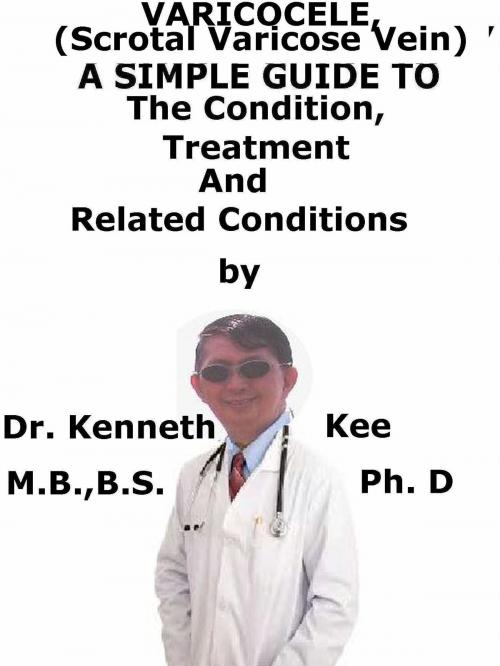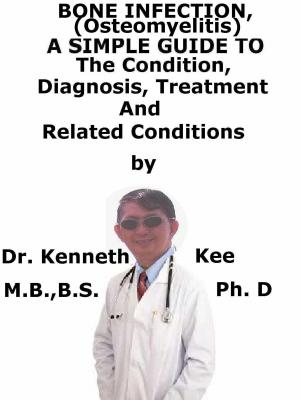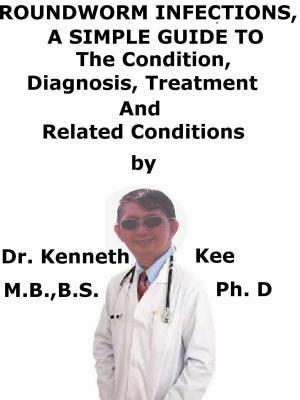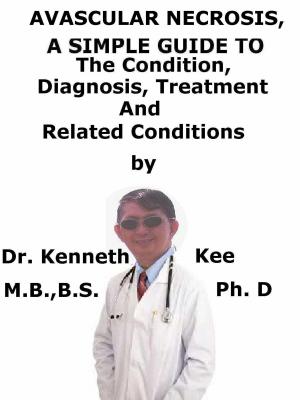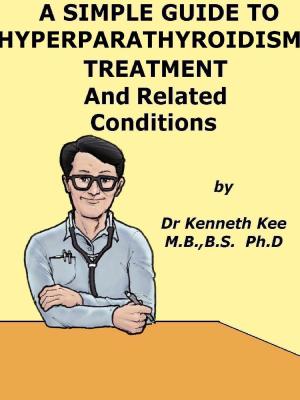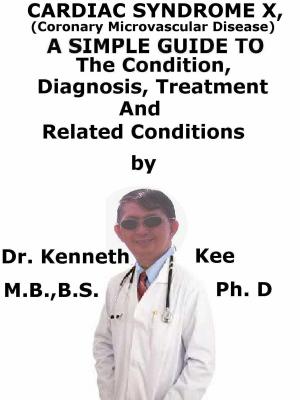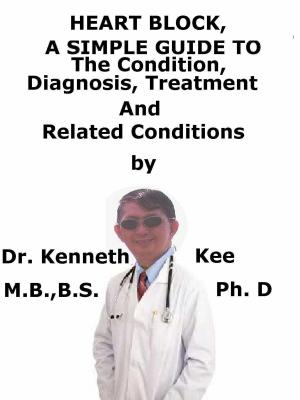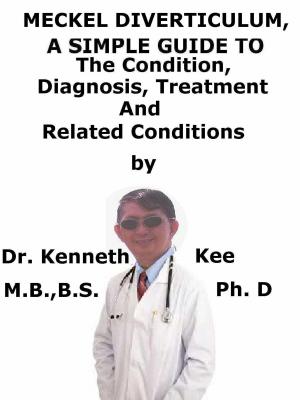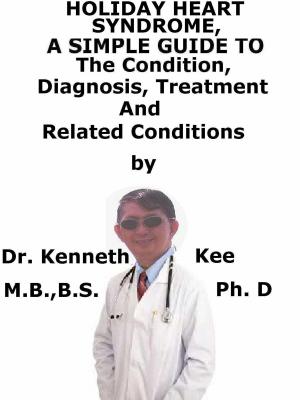Varicocele, (Scrotal Varicose Vein) A Simple Guide To The Condition, Diagnosis, Treatment And Related Conditions
Nonfiction, Health & Well Being, Medical, Surgery, Vascular, Health| Author: | Kenneth Kee | ISBN: | 9781370361038 |
| Publisher: | Kenneth Kee | Publication: | December 12, 2016 |
| Imprint: | Smashwords Edition | Language: | English |
| Author: | Kenneth Kee |
| ISBN: | 9781370361038 |
| Publisher: | Kenneth Kee |
| Publication: | December 12, 2016 |
| Imprint: | Smashwords Edition |
| Language: | English |
A varicocele is a medical disorder that results from the abnormal dilatation of the pampiniform venous plexus and the internal spermatic vein caused by venous reflux.
Varicocele is a well-known cause of reduced testicular function and occurs in about 15-20% of all males and in 40% of infertile males.
A varicocele is a varicose vein of the scrotum and testicle.
In a varicocele, the valves in the veins of the pampiniform venous plexus do not function properly.
Varicoceles can impair sperm production and function.
They are important because they are a well-recognized cause of reduced testicular function and are linked with male infertility.
If left untreated, varicoceles may lead to infertility.
A varicocele forms when valves inside the veins that run along the spermatic cord prevent blood from flowing properly.
This causes the blood to back up resulting in widening and swelling of the veins.
Varicoceles are more common on the left for anatomical reasons:
1. The angle at which the left testicular vein enters the left renal vein.
2. Inadequate effective valves between the testicular and renal veins.
3. The increased renal vein pressure due to its compression between the superior mesenteric artery and the aorta (i.e., nutcracker effect).
Varicoceles differ in size and can be categorized into the following 3 groups:
a. Large - Easily identified by inspection alone
b. Moderate - Identified by palpation without bearing down (Valsalva maneuver)
c. Small - Identified only by bearing down which raises intra-abdominal pressure thus impeding drainage and raising varicocele size
They are more common in men ages 15 - 25 and are most often seen on the left side of the scrotum.
Symptoms are:
1. Enlarged, twisted veins in the scrotum
It has been described as a bag of worms.
2. Painless testicle lump, scrotal swelling, or bulge in the scrotum
Physical examination is not the best method of detection
Doppler studies is the method of choice to diagnose varicocele
CT scans - may be required to identify tumors obstructing the testicular vein.
Infertility is a complication of varicocele
Treatment is by:
1. A jock strap (scrotal support) or snug underwear may help relieve the pain or discomfort.
If pain persists or other symptoms happen, the patient may need further treatment.
2. Surgery to correct a varicocele is called varicocelectomy.
The patient will leave the hospital on the same day as the surgery.
During this procedure, the patient will receive some form of anesthesia (numbing medication).
The urologist will make a cut usually in the lower abdomen and ligate the abnormal veins.
Blood will now circulate the area into normal veins.
Keep an ice pack on the area for the first 1 day after surgery to decrease the swelling.
3. An alternative to surgery is varicocele embolization.
TABLE OF CONTENT
Introduction
Chapter 1 Varicocele
Chapter 2 Causes
Chapter 3 Symptoms
Chapter 4 Diagnosis
Chapter 5 Treatment
Chapter 6 Prognosis
Chapter 7 Infertility
Chapter 8 Male Orgasm
Epilogue
A varicocele is a medical disorder that results from the abnormal dilatation of the pampiniform venous plexus and the internal spermatic vein caused by venous reflux.
Varicocele is a well-known cause of reduced testicular function and occurs in about 15-20% of all males and in 40% of infertile males.
A varicocele is a varicose vein of the scrotum and testicle.
In a varicocele, the valves in the veins of the pampiniform venous plexus do not function properly.
Varicoceles can impair sperm production and function.
They are important because they are a well-recognized cause of reduced testicular function and are linked with male infertility.
If left untreated, varicoceles may lead to infertility.
A varicocele forms when valves inside the veins that run along the spermatic cord prevent blood from flowing properly.
This causes the blood to back up resulting in widening and swelling of the veins.
Varicoceles are more common on the left for anatomical reasons:
1. The angle at which the left testicular vein enters the left renal vein.
2. Inadequate effective valves between the testicular and renal veins.
3. The increased renal vein pressure due to its compression between the superior mesenteric artery and the aorta (i.e., nutcracker effect).
Varicoceles differ in size and can be categorized into the following 3 groups:
a. Large - Easily identified by inspection alone
b. Moderate - Identified by palpation without bearing down (Valsalva maneuver)
c. Small - Identified only by bearing down which raises intra-abdominal pressure thus impeding drainage and raising varicocele size
They are more common in men ages 15 - 25 and are most often seen on the left side of the scrotum.
Symptoms are:
1. Enlarged, twisted veins in the scrotum
It has been described as a bag of worms.
2. Painless testicle lump, scrotal swelling, or bulge in the scrotum
Physical examination is not the best method of detection
Doppler studies is the method of choice to diagnose varicocele
CT scans - may be required to identify tumors obstructing the testicular vein.
Infertility is a complication of varicocele
Treatment is by:
1. A jock strap (scrotal support) or snug underwear may help relieve the pain or discomfort.
If pain persists or other symptoms happen, the patient may need further treatment.
2. Surgery to correct a varicocele is called varicocelectomy.
The patient will leave the hospital on the same day as the surgery.
During this procedure, the patient will receive some form of anesthesia (numbing medication).
The urologist will make a cut usually in the lower abdomen and ligate the abnormal veins.
Blood will now circulate the area into normal veins.
Keep an ice pack on the area for the first 1 day after surgery to decrease the swelling.
3. An alternative to surgery is varicocele embolization.
TABLE OF CONTENT
Introduction
Chapter 1 Varicocele
Chapter 2 Causes
Chapter 3 Symptoms
Chapter 4 Diagnosis
Chapter 5 Treatment
Chapter 6 Prognosis
Chapter 7 Infertility
Chapter 8 Male Orgasm
Epilogue
